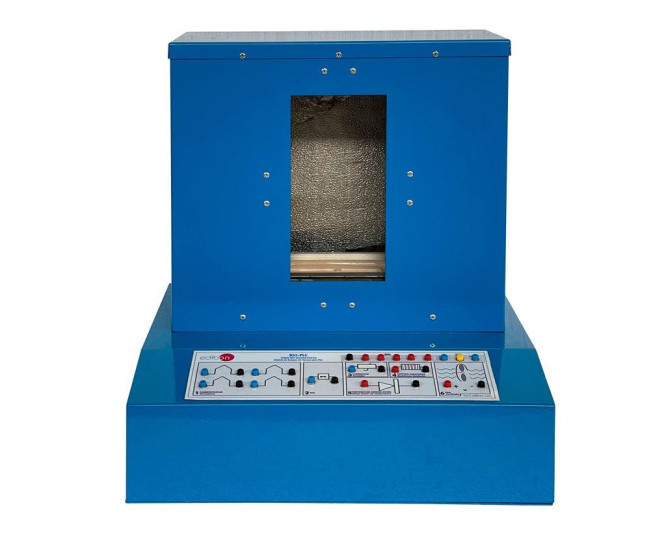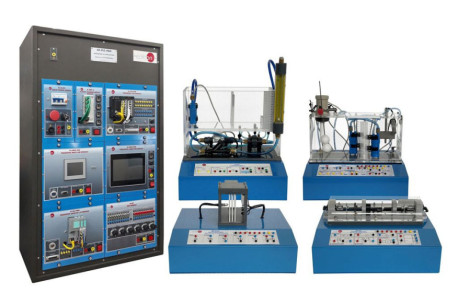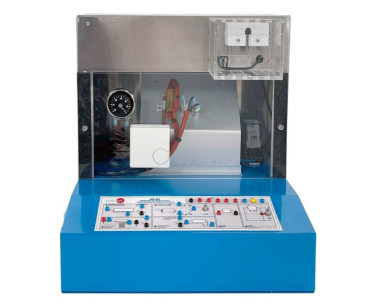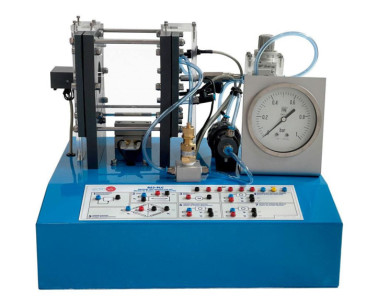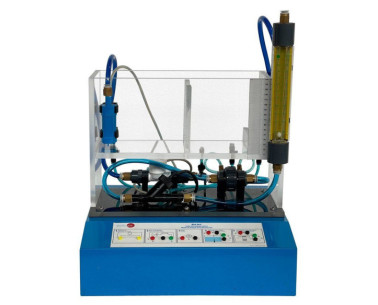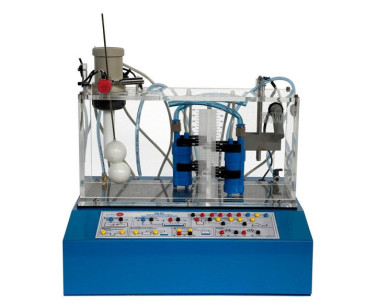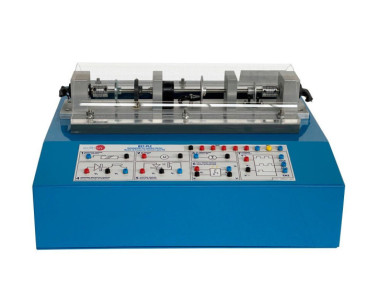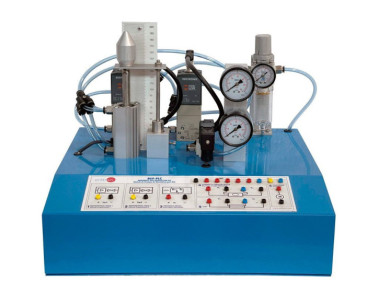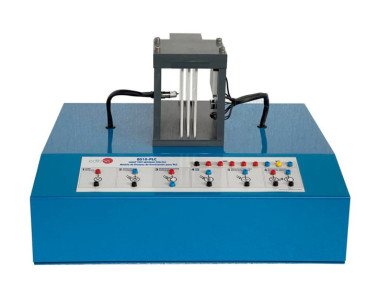At EDIBON, we are committed to strengthening skills as a strategic pillar for the competitiveness and social well-being of the European Union. Proper training not only boosts the economy but also enables individuals to fully participate in society and democracy.
BS5-PLC Ovens Test Module for PLC
INNOVATIVE SYSTEMS
The "BS5-PLC" has been designed to study the temperature measurement techniques inside a sealed place, such as an oven and how to perform a temperature control through a PLC.
RELATED NEWS
General Description
The "BS5-PLC" has been designed to study the temperature measurement techniques inside a sealed place, such as an oven and how to perform a temperature control through a PLC. This unit is equipped with an oven that contains a heating element and a changeable speed fan than enables to modify the oven time constant. The oven has four equal thermocouples placed on different heights, a platinum heating element thermometer, a thermistor and a semiconducting mechanism sensitive to temperature. One of the temperature sensors output signals is conditioned to be connected to the PLC. The temperature inside the oven can be controlled with a PLC through the signal obtained from a sensor.
*Available PLC models of different manufacturers: PANASONIC, SIEMENS, OMRON, MITSUBISHI, ALLEN BRADLEY, etc.
Exercises and guided practices
GUIDED PRACTICAL EXERCISES INCLUDED IN THE MANUAL
- Heating element. Raise the oven internal temperature, over the environmental temperature, using a heating element to do tests and practices related with temperature measurement.
- To use a fan as refrigerating element of the oven.
- To use thermocouples as temperature sensors elements inside the oven. Temperature measurement using a thermocouple.
- To measure temperature inside the oven using a platinum resistance thermometer.
- To measure temperature inside the oven using a thermistor temperature sensor.
- Temperature measurement using a thermistor, based on its negative temperature coefficient.
- To obtain the temperature value inside the oven using a semiconductor sensor (diode).
- Using the analog inputs and outputs of the PLC to read and write analog signals.
- Read the temperature sensor signal with the PLC.
- Manual control of the actuator through the PLC.
- PID control of the temperature value through the PLC.
- Observe the effects of the temperature control to changes in the PID parameters.
SUPPLEMENTARY EQUIPMENT
6.2.3.- INSTRUMENTATION AND CONTROL WITH PLC
BS-PLC
The Modular System for the Study of Sensors with PLC Control, "PLC-BS", are a large number of modules that show the operation of different sensors to understand the sensor control applications of different technologies, applied to common...
6.2.3.- INSTRUMENTATION AND CONTROL WITH PLC
BS2-PLC
Temperature Test Module for PLC
The "BS2-PLC" has been designed to study the use and applications of temperature sensors as a measure device and how to perform a temperature control through a PLC. TThe unit has a half-open space inside which there is a lamp that heats the...
6.2.3.- INSTRUMENTATION AND CONTROL WITH PLC
BS3-PLC
Pressure Test Module for PLC
The "BS3-PLC" has been designed to study the pressure measurement techniques and control application with a PLC. This unit is equipped with a pressure chamber with several sensors, with different uses and applications, adjusted to measure the...
6.2.3.- INSTRUMENTATION AND CONTROL WITH PLC
BS4-PLC
Flow Test Module for PLC
The "BS4-PLC" has been designed to study the flow measurement techniques and control with PLC. This unit is unit with two tanks assembled on a structure with a pumping system that allows pumping the water from the reservoir tank, through the...
6.2.3.- INSTRUMENTATION AND CONTROL WITH PLC
BS6-PLC
Liquid Level Test Module for PLC
The "BS6-PLC" has been designed to study the liquid level measurement and control techniques of a tank through a PLC. This unit is unit with two tanks with sensor of different technology for level measurement. One of the level sensor output...
6.2.3.- INSTRUMENTATION AND CONTROL WITH PLC
BS7-PLC
Tachometers Test Module for PLC
The "BS7-PLC" has been designed to study the linear and angular speed measurement techniques through a PLC. This unit is unit with a miniature motor to move an axle at different speeds, being able to adjust de motor speed by changing the voltage...
6.2.3.- INSTRUMENTATION AND CONTROL WITH PLC
BS9-PLC
Pneumatic Test Module for PLC
The "BS9-PLC" has been designed to study the control and handling techniques of a pneumatic actuator through a PLC. The actuator is a double acting pneumatic cylinder that allows moving a platform. The displacement of the piston axle is detected...
6.2.3.- INSTRUMENTATION AND CONTROL WITH PLC
BS10-PLC
Light Test Module for PLC
The "BS10-PLC" has been designed to study different light measurement techniques and control light intensity through a PLC. This unit is composed of a lamp whose intensity can be controlled according to the voltage applied and a series of...
Quality

AFTER-SALES SERVICE

 Cookie preferences
Cookie preferences

